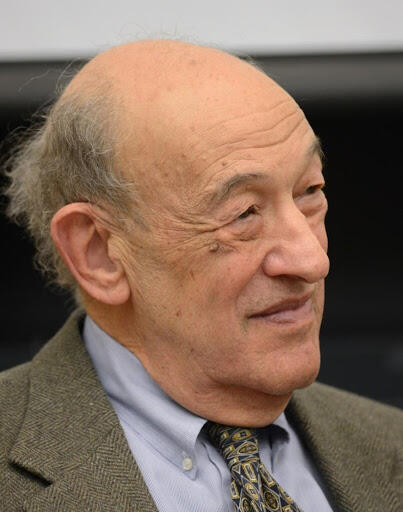Ambassador John Roos and the Importance of Student-to-Student Exchange
Just over ten years after becoming the first U.S. ambassador to Japan to participate in the Hiroshima Peace Memorial Ceremony in 2010, Ambassador John Roos spoke about his experiences with 26 high school students in Stanford e-Japan from throughout Japan. In his October 16, 2020 online talk, Ambassador John Roos noted that his tenure in Japan—2009 to 2013—was defined by three major issues: (1) the 2011 Great East Japan Earthquake or 3/11; (2) Operation Tomodachi (“friend” in Japanese) during which the U.S. Armed Forces helped in disaster relief following the 3/11 crisis; and (3) the Hiroshima Peace Memorial Ceremony on August 6, 2010.
Regarding the first and second issues, Ambassador Roos recalled, “I was proud that the United States was there to help the people in Japan who obviously faced one of the biggest crises in your history… Vice President Biden came to Japan and the two of us traveled up to the Tohoku region because he wanted to see firsthand how he could help and how the United States could help, and I saw him interacting with not only the leaders but the people of the Tohoku region.” In addition to Operation Tomodachi, the youth-focused Tomodachi Initiative—a public-private partnership between the U.S.-Japan Council and the U.S. Embassy in Tokyo, with support from the Government of Japan—was born out of support for Japan’s recovery from the 2011 Great East Japan Earthquake. Regarding the third issue, Ambassador Roos shared, “I was the first United States ambassador to go to the Hiroshima commemoration ceremony. And I did that because I felt it was important to show respect for all of the victims of World War II and particularly obviously the victims of Hiroshima and Nagasaki. I did it because I felt that it was helping to promote President Obama’s agenda of the elimination of all nuclear weapons.”
During his talk, Ambassador Roos coupled his sharing of specific personal recollections with general insights on being the U.S. ambassador to Japan. For example, he explained that the role of the U.S. ambassador to Japan is twofold. First, the U.S. ambassador’s responsibility is to protect and look after the health and safety of the Americans that live in Japan—about 150,000 of them—including another 50,000 U.S. military personnel and their dependents. Second, nurturing and looking after the relationship between Japan and the United States, of course, is critical. He not only touched upon economic, political, and security relations but also emphasized the importance of student-to-student exchange. Concerning the latter, he is concerned that students from the United States are not spending enough time in Japan, and students in Japan are not spending enough time in the United States.
His insights profoundly connected to a student from Kyoto who commented, “When I am older, I hope to become a diplomat and maybe even an ambassador, so I’m really excited to get to talk to you today.” She continued, “What do you think makes a successful ambassador?” Ambassador Roos replied, “I hope you become the ambassador to the United States… Obviously, an ambassador needs to deal with all of the different policy issues and many difficult issues, but I think the most important thing is—and you may not expect this—but it is to listen… and to learn and to hear all sides of the equation… to show empathy.”
The current fall 2020 session of Stanford e-Japan is the 12th offering of the course since 2015. Stanford e-Japan is made possible by Mr. Tadashi Yanai, Chairman, President, and CEO of Fast Retailing Co., Ltd. Mr. Yanai and Ambassador Roos share a mutual concern for the need for students in Japan and the United States to spend more time in each other’s countries.
As a closing question, Stanford e-Japan Instructor Meiko Kotani asked Ambassador Roos what he expects from Japanese high school students and what role he thinks they should play to foster the U.S.–Japan relationship. Roos responded, “Well, first of all, let me tell you how impressed I am by this group of students. The reason I am doing this session at 9:00pm on a Friday night is because I think you are the future of the relationship. So I encourage you to find ways to connect with the younger generation of [the United States] because in the end, we need you. We need the best and brightest minds, not only in the United States but in Japan and the rest of the world to confront some pretty big challenges we have in the world right now… When I listen to you, it gives me a tremendous amount of hope, and so I’m just honored to have had the opportunity to talk with you.”
After Ambassador Roos signed off, the students shared some points that especially resonated with them. Among these were the deep respect that Ambassador Roos has for Japan and his visit to all 47 prefectures; the importance he placed upon the need for high school students in Japan to communicate with high school students in the United States; the importance he placed upon the leadership of the United States to be humble despite its power; and the importance of empathy. And since 2020 marks the 75th anniversary of the end of World War II, the following words that Roos stated seemed to especially resonate with the students: “President Obama said that we may not eliminate nuclear weapons in his lifetime or my lifetime. I hope in your lifetime.”

Stanford e-Japan
Just over ten years after becoming the first U.S. ambassador to Japan to participate in the Hiroshima Peace Memorial Ceremony in 2010, Ambassador John Roos spoke about his experiences with 26 high school students in Stanford e-Japan from throughout Japan.










 Stanford e-Entrepreneurship Japan honoree Yasuko Kinoshita with Principal Takahiro Watanabe, Akita Senior High School; photo courtesy Yasuko Kinoshita
Stanford e-Entrepreneurship Japan honoree Yasuko Kinoshita with Principal Takahiro Watanabe, Akita Senior High School; photo courtesy Yasuko Kinoshita






